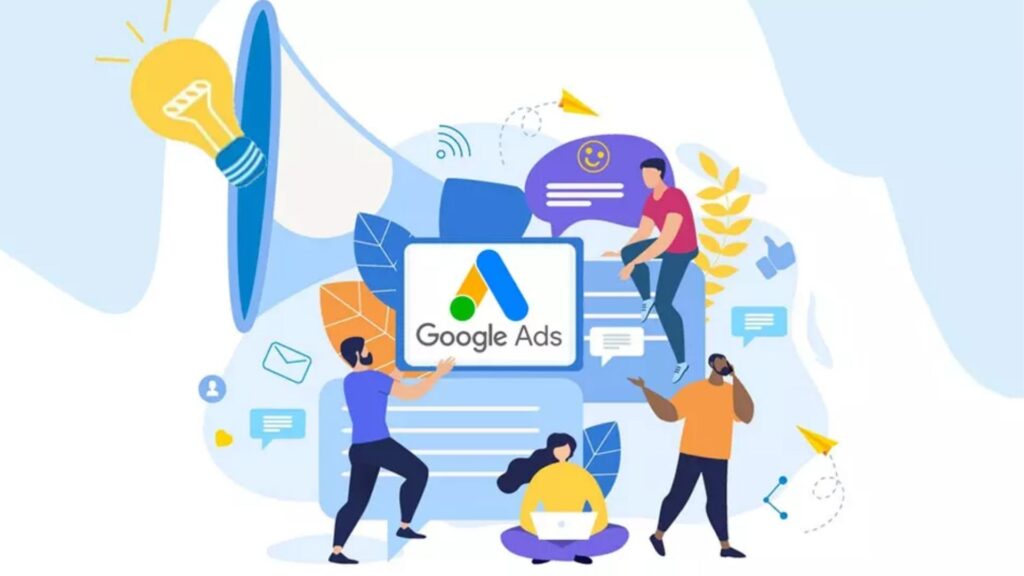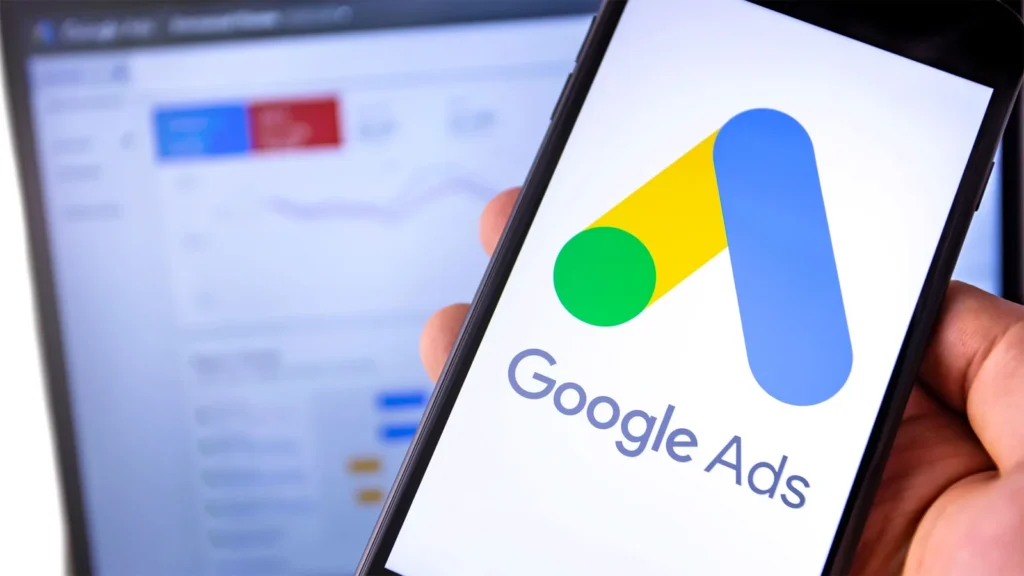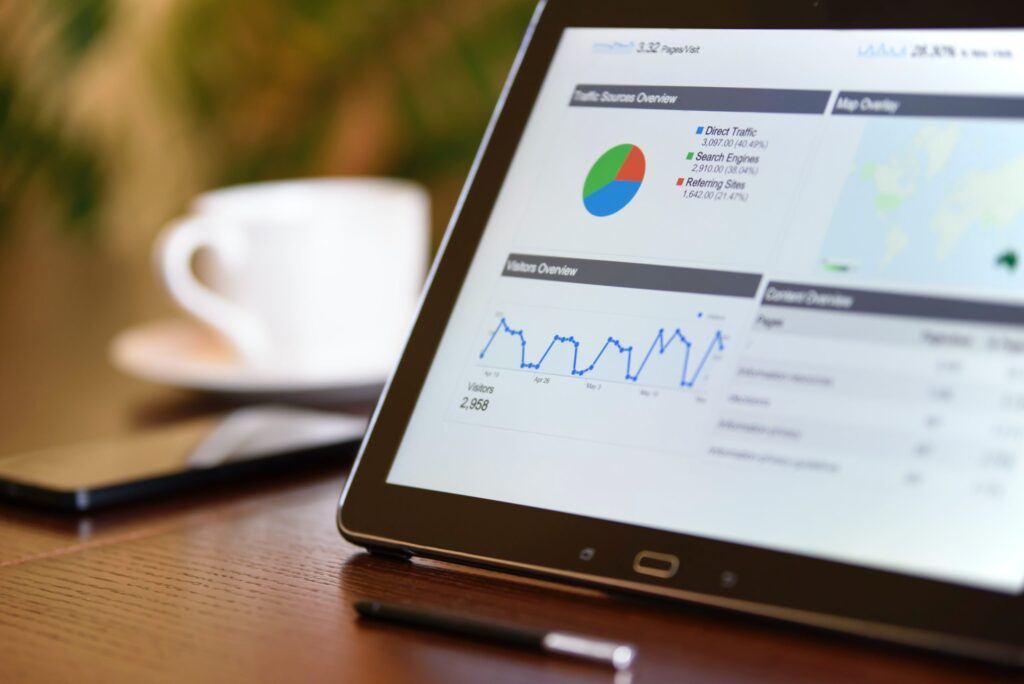
Achieving the best out of your Google Ads campaigns’ return on investment (ROI) is essential for success in the highly competitive world of online advertising. Conversions are the real game-changer, even though traffic generation is necessary. With the help of these practical tips, you can maximize conversions from your Google Ad campaigns and gain an advantage in this competitive marketplace.
Set Clear Conversion Goals
Defining the right conversion objectives is the first step toward achieving the best results with your Google Ads campaigns. What actions do you want users to take on your website? Do you want them to fill out a form, purchase a product, or download an application? Be clear and determine your target conversion rates based on the mentioned goals.
Optimizing Ad Copy and Landing Pages for Google Ads Campaigns
Using your ad copy and landing pages is not just a tactic; the game-changer increases conversions for your Google Ads. It is about having ads that the audience can connect with and the web pages that meet the expectations set by those ads. Here are some specific action steps you can take to achieve this goal:
Optimizing Ad Copy
Ensure the ad copy contains the keywords you want to focus on. This makes it more relevant and enhances your Quality Score, reducing your cost per click (CPC). Ensure that your ad copy aligns with the search intent of the target users. Determine if they are searching for content and are willing to buy.
Utilize Ad Extensions
Create more additional links where you can offer one or another product section or some special offer on your site.
Callout Extensions
Beware that significant symbols, such as ‘Free Shipping’ or ‘24/7 Customer Support,’ should be emphasized.
Structured Snippets
These are used to list specific aspects, like the brands of the products you offer, the type of products, the services you offer, etc.
Optimizing Landing Pages
Select a landing page related to the ad’s content and align it with its message to visitors. For instance, if your ad told consumers they would get a discount when they indicated they wanted to buy your product or else get a discount, the landing page should replicate this discount. Retaining many of the same images and design aspects across the ad and the landing page drives engagement.
Load Speed
Ensure that your landing page is speedy to load without delays. Slow page-loading time results in high bounce rates and low conversion rates, which are unprofitable for every business.
Mobile Optimization
Make sure you have a mobile version of the page where you will be landing your users. Many clients will visit your page from mobile devices, and outstanding usability from such devices boosts your chances of conversion.
Visibility
Your CTA buttons must be easily seen and placed where people can find them easily. Some should be written in similar colors to stand out when contrasting.
Action-Oriented
Ensure that your call-to-action statements are specific and likely prompt an action. Do not say “submit,” but instead use the keywords “Get Your Free Quote” or “Start Your Free Trial.”
Choosing the Right Audiences, Tips for Google Ads Campaigns

Evaluating the right market audience is essential to achieve the desired returns in your Google Ads marketing. By correctly using the targeting options, you can easily enhance the overall performance of your campaign and target individuals who would be most inclined to convert to buyers. Below are the specific ways of identifying the intended audience:
Long-Tail Keywords
Concentrate efforts on long-tail keywords with high purchasing intentions. As mentioned, long-tail keywords tend to have lower competition, resulting in low CPC and high conversion.
Negative Keywords
Exclusion: This ensures that negative keywords are continuously updated since some terms can be irrelevant to the business. It also ensures that your adverts are not displayed to users with low conversion chances.
Efficiency
Thus, incorporating the negatives into your bidding strategy allows you to allocate your budget more effectively to relevant and potential keywords, contributing to the overall return on investment.
Exact Match
Type exact-match keywords to capture searches that accurately match the typed keywords. This will ensure that your ads are targeted to the correct search queries.
Cross-Device Targeting
Make sure to present similar adverts and messages across desktop and mobile platforms. This is particularly important because users transfer from one device to another, and a consistent experience can enhance your brand and enable conversion.
Ad Scheduling and Location Targeting
Identify the periods of the day when your targeted audience is most active and ensure that your ads are placed during these periods. This can help increase traffic and sales to a maximum level. Respond to the bids based on the hours of the day and days of the week. For instance, if you observe that your ads are more effective when presented on weekends, consider bidding during such times.
Specific Locations
Focus on the territories where your target client base is located. This includes various countries, regions, cities, and even postal codes.
Localized Ads
Adapt the message and promotion in the advertisement to the specified location. Targeted advertising messages may have better recall and lead to higher conversion rates.
Bid Strategy Optimization for Google Ads Campaigns
Bid adjustment is vital in achieving the best results and the highest return on investment of your Google Ads marketing techniques. By optimizing the money spent, you can discover your ads by the defined audience through appropriate bid strategies. Here is a comprehensive guide on performing bid strategies to obtain the best returns.
Cost per Acquisition or Target CPA
This strategy aims to deliver as many conversions as possible within, or at least slightly above, the target CPA. Ideally, you need to know precisely the amount you are willing to spend to get each conversion.
Desired Target ROAS (Return on Advertising Spend)
This strategy is devised to achieve the highest possible conversion value, depending on the return on ad spend you set. It can enhance conversion optimization for a higher value.
Maximize Conversions
This strategy puts your money where it yields the highest conversion rate for the available cash. This is suitable for campaigns that require conversion and are not specific for cost per acquisition or lead costs.
Maximize Conversion Value
This is similar to Maximize Conversions but with the added advantage of trying to get conversions at the highest value possible to you but within the set budget.
Proper usage of conversion tracking and analytics within Google Ads campaigns

Conversion tracking and proper analysis of the data collected play a vital role in successfully running Google Ads. When you know how people engage with your ads and which engagement is most likely to result in conversions, you can make more intelligent decisions to improve performance and thus increase ROI. Here is a step-by-step guide to using conversion tracking and analytics for Google Ads.
Setting Up Conversion Tracking
Determine the main call to action. This can be buying, registering, or submitting a contact form. Capture additional low-intent but high-value activities that precede the primary conversion event, such as newsletter subscriptions, video plays, or anything that leads to adding products to the cart.
Insert the Conversion Tag on Your Site
After defining a conversion action, Google Ads will give you a conversion tracking tag. Place this tag on all the web pages with your call to action where you want to track conversions. For example, place it on the confirmation or thank you page that users get after checking out.
Utilize Google Tag Manager
Google Tag Manager provides a platform for tracking all your tags. This makes implementing and managing conversion tracking easier while avoiding any direct alterations to the website code. Use event tracking to track more detailed conversions for specific events, such as clicking the button, submitting a form, etc.
Analyzing Conversion Data
Different attribution models help you to see how specific points contributed to an actual conversion. Some of the most common models include the last touch, the first touch, linear, time-decay, and position-based models. Select Campaign -> Tools and Settings ->Measurement ->Attrition. Evaluate the effectiveness of the chosen attribution models to view which ads and keywords are paramount for your conversion funnels.
Multi-Channel Funnels
Google Analytics analyzes the Multi-Channel Funnels reports to see how each channel (i.e., Organic Search, Social, Direct) plays a role in the conversion process. This is useful in tracking the customer journey and thus adjusting the cross-channel marketing strategy. By looking into the conversion paths, understand how the marketing-generated leads are transforming into clients. This data should be used to fine-tune your marketing plans in the future.
Conversion Segmentation
Audience Segments: One way to analyze the performance of different conversion points is to divide the conversion data based on audience characteristics such as demographics, geographic location, and devices.
Behavioral Segments
Check the segmentation in terms of user activity to get insights into how the interactions affect conversions (e.g., new vs. return users and the length of the session).
Optimizing Google Ads Campaigns through Ongoing Testing and Analysis

If you want your Google Ads campaigns to work for the long term, you should always experiment and evaluate different aspects of campaigns. This process reveals effective strategies and allows you to continue fine-tuning the process to achieve higher levels of efficiency and ROI. Below is a step-by-step guide on polishing your Google Ads campaigns through constant optimization.
A/B Testing (Split Testing)
Experiment with your ad copy, headlines, descriptions, display URLs, and CTAs. Try different layouts for your landing page, body copy, forms, and images. Split-test different headlines, product descriptions, and CTA button options to discover which combinations produce the best results. It is recommended that broad matches be tested against exact-matching keywords and different groupings of keywords to see which is more effective.
Multivariate Testing
One advantage of multivariate testing is that it enables you to test multiple elements simultaneously, unlike in A/B testing. For instance, it is possible to determine the effectiveness of different headlines, images, and CTA buttons on a landing page. This method makes comprehending how different components engage easier and offers better perspectives into what causes conversions.
Audience Testing
Experiment with different demographic targeting options, such as age, gender, and household income, to determine which audience segment is the most engaged. Establish and experiment with specific audiences based on user conduct and preferences to find actionable segments.
Analytical Tools and Techniques
Correct methods and approaches in analyzing Google Ads can effectively achieve the desired result. These tools assist in examining patterns in consumer activity and results and improve decision-making, thereby optimizing your campaign. Here is a comprehensive guide and list of the most fundamental analytical tools and techniques you should employ.
Google Ads Reporting
Conduct a review of Google Ads’ standard reports daily or weekly to assess the status of such features as the number of clicks, impressions, CTR, CPC, conversions, and cost per conversion. Customize some reports with data you want to monitor concerning the campaign objectives. For example, create a report to monitor sales using the device type or location explored in the previous section.
Google Analytics
Benefiting from the Behavior Flow, you will learn more about how users interact with your site and where they exit. This can help clear the user’s path and find problems that need to be solved. Look at each marketing channel with separate conversion metrics to determine its impact on total conversions. This assists in deciding which channels should be budgeted more to avoid the worst-performing ones.
Attribution Analysis
Look at various attribution approaches, such as last touch, first touch, and linear, to see how each contact made throughout the campaign influenced the conversion. This can significantly assist in bidding and targeting plans to keep your brand before audiences. Implement device-level visibility to understand visitors’ behavior with ads across devices. This gives a broader perspective on potential customers’ thinking.
Conclusion
As every campaign in Google Ads is conversion-oriented, managing them to enhance conversion rates is a step-by-step process based on a deep strategy and constant monitoring. About Google Ads, it is crucial to have clear objectives, preferred audience, appropriate slogans and landing pages, proper bidding strategies, and quality conversion tracking that will let you make the right changes to your advertisements and deliver higher conversion rates. Today, being flexible and performing constant experiments to follow changes in user behavior and tendencies in the ad market is crucial for holding a solid position in the competitive web advertising field.

